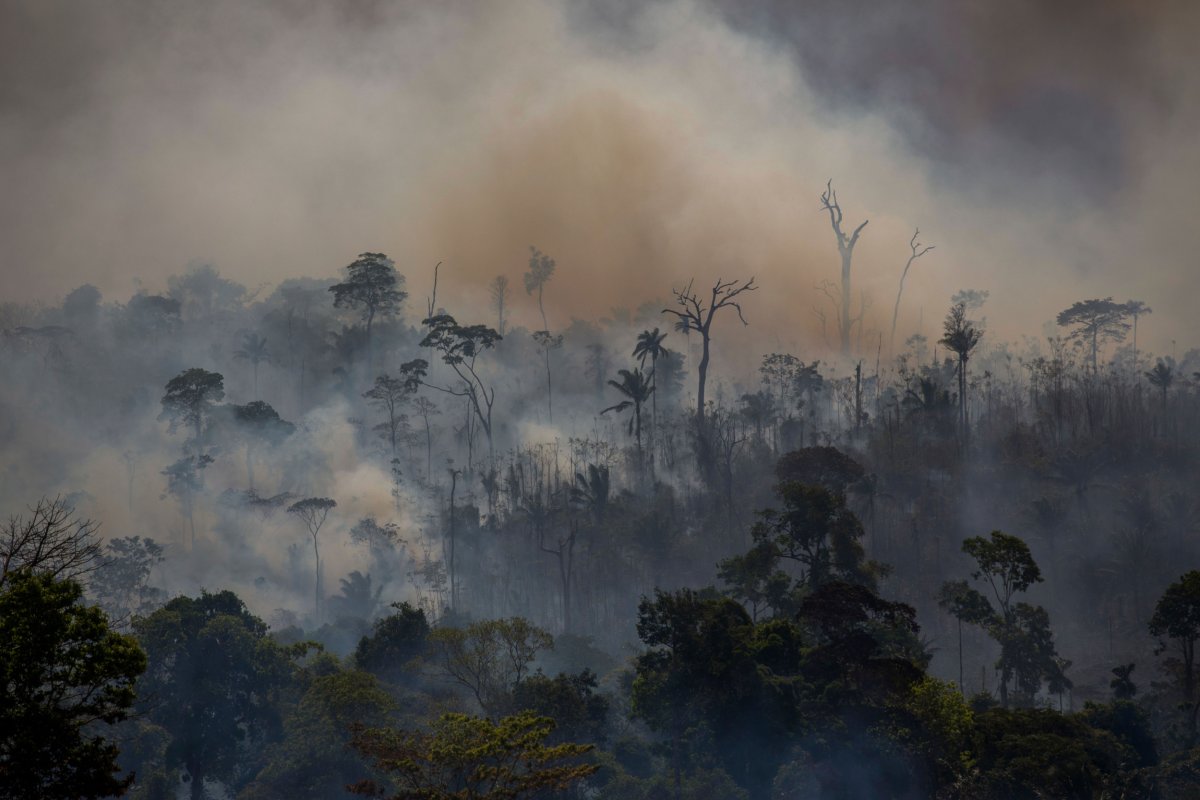The European Space Agency (ESA) has said that forest fires in the Amazon could be having an impact on global climate change as they release carbon dioxide into the atmosphere. On Monday, the organization released satellite imagery which provided new details of the impact of the blazes.
The data showed an increase in air pollution in the Brazilian Amazon as fires ravaged the region in August, the Associated Press reported.
According to Brazil's National Institute for Space Research, there have been around 100,000 wildfires in the entirety of the country so far this year—a 45 percent increase on the same period last year. More than half of these fires (around 53,000) have occurred in the Amazon biome—the highest number in this region since 2010.
Fire in the Amazon is used as a technique to clear land, usually for agriculture—the biggest driver of deforestation in the Amazon, alongside mining and other forms of land-grabbing. Farmers and other groups cut down vegetation and then wait for the dry season to ignite the fires. In this sense, humans are the main cause of fire in the Amazon—although natural wildfires do sometimes occur.
According to the ESA, the loss of trees in the Amazon through deforestation is concerning with regards to the global climate because of the role they play in acting as a carbon sink.
"The Amazon is a carbon sink, which slows the rate of carbon dioxide build up in the atmosphere, and thus climate warming," James Randerson from the University of California, Irvine, told Newsweek.
"Deforestation and fire-driven forest degradation affect the carbon cycle in two ways. First, there is a direct release of carbon dioxide into the atmosphere in the conversion process. Second, the loss of forest reduces the ability of the forest as a whole to absorb carbon. More forest fires in the Amazon will accelerate the buildup of greenhouse gases and we will have higher levels of global warming," he said.
Ecologist and author Sandra Steingraber from Ithaca College said that around half of the carbon dioxide that is pulled out of the atmosphere by the earth's biosphere on land is sucked up by tropical forests. But in the face of deforestation, the Amazon, at least, may be losing this ability.
"The Amazon is a big carbon sink but its ability to scrub carbon dioxide from the atmosphere is declining," she said. "This will contribute to climate chaos, turning tropical forests from a global carbon sink to a global carbon source is perhaps the most important consequence of destroying the Amazon."
Despite President Jair Bolsonaro announcing a 60-day ban on land clearing-fires last month, blazes have continued to burn in the rainforest. Not only could these have an impact on global warming through the release of carbon dioxide, but the fires are also emitting several other pollutants into the air which can be damaging to human health.

Uncommon Knowledge
Newsweek is committed to challenging conventional wisdom and finding connections in the search for common ground.
Newsweek is committed to challenging conventional wisdom and finding connections in the search for common ground.
About the writer
Aristos is a Newsweek science reporter with the London, U.K., bureau. He reports on science and health topics, including; animal, ... Read more
To read how Newsweek uses AI as a newsroom tool, Click here.








